Felt Fiber Art with NorraBorra
Have you ever seen a picture and fell head over heels in love with it? I have and knew I had to have it grace my wall as well as request an interview with the amazing artist behind the picture. Lourdes of NorraBorra creates stunning and inspiring works of art using felt of all colors and shapes and sizes. She created the picture of the horse running that I saw that day and knew it would inspire me to create my own works of art. She has created Vikings, couples, animals, elves, ships, and so much more! Using layers upon layers of felt, her endless imagination and a needle. Here she graciously shares how she started this paintings of wool, recommendations for new felt artists and women entrepreneurs, and so much more.
You can find more of her work in her Etsy Shop and find upcoming projects as well as behind the scenes on her Instagram profile.
Note - This post contains affiliate links, which means I will make a commission at no extra cost to you, should you click through and make a purchase. Please note that I do not recommend products or websites unless I use them or would use them myself. I have spend countless hours on Etsy and love seeing all the small creative businesses on there. :)
What gave you the idea/inspiration to start NorraBorra?
After more than a decade doing a very stressful job in the health sector, I needed to stop, radically turn my life around and start taking care of myself. so I decided to turn a long-standing hobby into a way to earn life. Also, the space in my house began to be reduced by the constant artistic creation, so I thought that maybe it was time to “let go of ballast” and share a little of that excess :)
How did you get started in creating felt art?
From that desire to lead a calmer life, I started to knit, like grannies, things with wool (scarves, hats, gloves…).Then I discovered the thick and fluffy XL merino wool and I started knitting blankets by hand. One thing led to another, since to join the strands of wool I needed felting needles, and then what a discovery! I could sculpt with them!!! And then…you see, once you start it’s impossible to stop!
What’s your favorite artwork to make?
Without a doubt they are the “paintings” of wool. I have always liked to paint. My mother painted in oils and I with her. What I liked the most was drawing with pastels…until I discovered wool fleece, of course! It was wonderful to know that I could paint with wool by mixing and melting the fibers in layers until I achieved a result that was not only visually interesting, but also textured and embossed. It reminds me of the oil paintings I used to paint with thick materials, like beach sand, only, in this case, with a soft and cozy result.
How do you choose the fiber you work with?
I am looking for wool from different sources, to try which one best suits my purposes, but I usually choose the native merino sheep wool because it is fine, soft, and ductile for details. Other yarns are thicker or curlier, they are perfect for animal fur or figure hair.
How do you choose the designs you create – ie is there something that you take inspiration from when you start a design?
I like to be inspired by Scandinavian motifs. The first figure I created was a Viking! I have family ties to Sweden and I love everything related to its forests and traditions. For example, every year a new Saint Lucia cannot be missing for Christmas.
What do you wish people understood about making fiber art?
I would like this laborious needle felting technique to be better known, and therefore more valued, in some places like Spain. Some people thick that the figures are stuffed toys!
This is because it is actually a fairly recent technique. Although wool felt is the oldest known textile, the first felting machines with the needles we know today did not appear until the 19th century, but it was not until well into the 20th century (I think in the 1980s) when it began to use these needles manually to sculpt artistic figures.
What would you tell a new fiber artist for encouragement?
Follow your intuition and work with perseverance and heart, this way you will expand, almost without realizing it, the perspective and you will strengthen yourself in your goals. I would also tell her to pamper her true followers, who are those people to whom you would like to direct your creations and who really know how to value your effort.
What is something you are passionate about and why?
The books (on paper, of course). I graduated in Hispanic Philology, and therefore, reading and literature have always accompanied me.
How has COVID changed or impacted your vision/strategy?
Suddenly, with the growth of remote work, competition on e-commerce platforms like Etsy increased enormously, so more hours had to be spent on the subject of positioning. Understanding this and knowing how to handle it continues to be a real challenge for me.
What is something that has helped you get through during this global pandemic? Something encouraging or positive?
Obviously, in my case, I had an advantage, since the confinement was sweeter with many felt projects to do.
On a positive note, perhaps I would say that it greatly opened my eyes to a greater understanding of the world we live in and to the appreciation of things we take for granted, such as our freedom.
If you had one (or several) things to share with a woman entrepreneur, what would it be? What would you encourage them about?
Turning your hobby or passion into a business is not an easy task. You have to take into account many more things than you thought and sometimes the working hours are endless. It is a continuous learning with its sacrifices and its satisfactions.
We now have a very difficult economy that is causing many small businesses to close. In Spain, moreover, the share of self-employed continues to grow and is huge for a beginning artist. All this poses a great challenge and great uncertainty.
But you have to try at least for a set time. It is better to fall after trying than to not try at all. We will always have everything we have learned to start again when better times come.
What is a lesson learned for being a woman entrepreneur that you wish someone had told you when you first started?
Above all, how to overcome with good spirits, and without dying in the attempt, the bureaucratic obstacles. In other words, practical topics such as how to deal with customs processes, the tax agency, etc., how to become visible and how to update on an e-commerce platform.
You can’t just leave your creations hanging in the store. There is another “creative” work behind it, which needs to be polished day by day, and which I didn’t know anything about at first.
Fun question – if you could meet one person in history or present, who would it be and why?
Well, for example, the Italian Renaissance polymath Leonardo da Vinci. in an increasingly specialized world in which we can know a lot about something and yet be ignorant about many other things, we lose a complete vision of the universe, in addition to stunting our curiosity or innate ability as human beings to question everything. Leonardo was, in a single life, a painter, architect, botanist, engineer, philosopher, inventor, musician, poet, anatomist…even a cook! (I recommend the book “Leonardo da Vinci’s Kitchen Notes” Fascinating!!)
What is your dream for NorraBorra to be (where do you see NorraBorra in 5+ years)?
Above all, continue to keep Norraborra active, which is not a small thing. I would also like that, by then, there would be more dissemination and knowledge of what needle felting is, especially in my country. And already put, it would not be bad to grow enough to have your own studio and collaborator ;)
Is there anything (message or topic) you would like to talk about that we did not ask about?
That you also have to rest :))
The motto is planning and discipline. Rest discipline, not work, because this activity is addictive and when you connect, you can not stop.
How can I and my readers help you with your dream for NorraBorra?
Just by doing and reading this interview, and/or visiting my page, you are already helping me, since the dissemination of any aspect of this textile art is essential for it to be truly understood and therefore valued. Before anything, thanks to everyone.
If you like this, you may like:
Felting Artwork with NorraBorra Interview in Spanish:
¿Qué te dio la idea/inspiración para iniciar NorraBorra?
Tras más de una década realizando un trabajo bastante estresante en el sector sanitario, necesitaba parar, dar un vuelco radical a mi vida y empezar a cuidarme, de modo que me planteé convertir una afición que venía de hace mucho tiempo, en un modo de ganarme la vida. Además, el espacio en mi casa empezó a verse reducido por la constante creación artística, así que pensé que quizá era el momento de “soltar lastre” y compartir un poco de ese exceso :)
¿Cómo empezaste a crear arte de fieltro?
A partir de ese deseo de llevar una vida más calmada, empecé a tejer, como las abuelitas, cosas con lana (bufandas, gorros, guantes...) Luego descubrí la gruesa y mullida lana merino XL y comencé a tejer mantas a mano. Una cosa llevó a la otra, ya que para unir los mechones de la lana necesitaba agujas de fieltrado, y entonces ¡Qué descubrimiento! podía esculpir con ellas! Y después... ya ves, una vez que se empieza, es imposible parar!
¿Cuál es tu obra de arte favorita para hacer?
Sin duda son las “pinturas” de lana. Siempre me ha gustado pintar. Mi madre pintaba al óleo y yo con ella. Lo que más me gustaba era el dibujo con pasteles...hasta que descubrí el vellón de lana, claro! Fue maravilloso saber que podía pintar con lana mezclando y fundiendo las fibras en capas hasta conseguir un resultado, no solo visualmente interesante, sino también con textura y relieve. Me recuerda a los cuadros que pintaba al óleo con materiales engrosantes, como arena de playa, solo que, en este caso, con un resultado suave y acogedor.
¿Cómo eliges la fibra con la que trabajas?
Voy buscando lanas de distinta procedencia, para ir probando cual se adapta mejor a mis propósitos, pero normalmente elijo la lana de oveja merina autóctona porque es fina, suave, dúctil para los detalles. Otras lanas
más gruesas o rizadas, son perfectas para pelajes de animales o cabellos de las figuras.
¿Cómo eliges los diseños que creas, es decir, hay algo en lo que te inspiras cuando comienzas un diseño?
Me gusta inspirarme en motivos escandinavos. La primera figura que creé fue un vikingo! Tengo lazos familiares con Suecia y me encanta todo lo relacionado con sus bosques y sus tradiciones. Por ejemplo, no puede faltar cada año una nueva Santa Lucía por Navidad.
¿Qué te gustaría que la gente entendiera sobre hacer arte con fibra?
Quisiera que esta técnica del fieltrado con aguja, tan laboriosa, fuera más conocida, y por tanto más valorada, en algunos sitios como España. ¡Hay quien piensa que las figuras son peluches rellenos!
Esto es porque en realidad es una técnica bastante reciente. Aunque el fieltro de lana es el textil más antiguo conocido, hasta el siglo XIX no aparecen las primeras máquinas para afieltrar con las agujas que hoy conocemos, pero no fue hasta bien avanzado el siglo XX (creo que en los años 80) cuando se comenzó a usar estas agujas manualmente para esculpir figuras artísticas.
¿Qué le dirías a un nuevo artista de fibras para que se anime?
Sigue tu intuición y trabaja con constancia y corazón, así ampliarás, casi sin darte cuenta, la perspectiva y te afianzarás en tus objetivos. Le diría también que mime a sus verdaderos seguidores, que son esas personas a las que te gustaría dirigir tus creaciones y que saben realmente valorar tu esfuerzo.
¿Qué es algo que te apasiona y por qué?
Los libros (en papel, por supuesto). Yo me licencié en Filología Hispánica, y por tanto, la lectura y la literatura me han acompañado siempre.
¿Cómo ha cambiado o impactado COVID su visión/estrategia?
De repente, con el crecimiento del teletrabajo, aumentó enormemente la competencia en las plataformas de e-commerce como Etsy, de modo que
hubo que echarle más horas al tema del posicionamiento. Comprender esto y saber manejarlo, sigue siendo para mí un verdadero reto.
¿Qué es algo que te ha ayudado a superar esta pandemia mundial? ¿Algo alentador o positivo?
Obviamente, en mi caso jugaba con ventaja, ya que el confinamiento fue más dulce con muchos proyectos de fieltro para hacer.
Como algo positivo, quizá te diría que me abrió en gran medida los ojos a un mayor conocimiento del mundo en el que vivimos y a la valoración de cosas que damos por supuestas, como nuestra libertad.
Si tuvieras una (o varias) cosas para compartir con una mujer emprendedora, ¿cuál sería? ¿Sobre qué les animarías?
Hacer de tu hobbie o pasión un negocio, no es tarea fácil. Hay que tener en cuenta muchas más cosas de las que uno pensaba y a veces las horas de trabajo son interminables. Es un aprendizaje contínuo con sus sacrificios y sus satisfacciones.
Ahora tenemos una economía muy complicada que está provocando el cierre de muchas pequeñas empresas. En España, además, la cuota de autónomos no deja de crecer y es enorme para un artista que empieza. Todo esto plantea un gran reto y una gran incertidumbre.
Pero hay que intentarlo al menos durante un tiempo establecido. Es mejor caer tras haberlo intentado, que no intentarlo en absoluto. Siempre nos quedará todo lo aprendido para volver a emprender cuando vengan tiempos mejores.
¿Cuál es una lección aprendida por ser una mujer emprendedora que desearías que alguien te hubiera dicho cuando empezaste?
Sobre todo cómo superar con buen ánimo, y sin morir en el intento, las trabas burocráticas. Osea, temas tan prácticos como la manera de lidiar con los procesos aduaneros, agencia tributaria, etc, cómo hacerse visible y cómo actualizarse en una plataforma de e-commerce.
No puedes dejar tus creaciones colgadas en la tienda sin más. Existe otro trabajo “creativo” detrás, que hay que pulir día a día, y del que yo no sabía nada al principio.
Pregunta divertida: si pudieras conocer a una persona en la historia o en el presente, ¿quién sería y por qué?
Pues, por ejemplo, el polímata del renacimiento italiano Leonardo da Vinci. En un mundo cada vez más especializado en el que podemos saber mucho de algo y sin embargo ser unos ignorantes en muchas otras cosas, perdemos una visión completa del universo, además de atrofiar nuestra curiosidad o capacidad innata como seres humanos para cuestionarnos todo. Leonardo fue, en una sola vida, pintor, arquitecto, botánico, ingeniero, filósofo, inventor, músico, poeta, anatomista...hasta cocinero! (Os recomiendo el libro “Notas de cocina de Leonardo da Vinci” ¡Fascinante!)
¿Cuál es tu sueño para que sea NorraBorra (dónde ves a NorraBorra en más de 5 años)?
Sobre todo, seguir manteniendo Norraborra en activo, que no es poco.
Me gustaría además que, para entonces, hubiera más difusión y conocimiento de lo que es el needle felting sobre todo en mi país. Y ya puestos, no estaría mal crecer lo suficiente para tener estudio propio y algún colaborador ;)
¿Hay algo (mensaje o tema) sobre el que le gustaría hablar que no hayamos preguntado?
Que también hay que descansar :))
El lema es planificación y disciplina. Disciplina de descanso, no de trabajo, porque esta actividad es adictiva y cuando te conectas, no puedes parar.
¿Cómo podemos yo y mis lectores ayudarte con tu sueño de NorraBorra?
Solo con hacer y leer esta entrevista, y/o visitar mi página, ya me estáis ayudando, ya que la difusión de cualquier aspecto de este arte textil es
fundamental para que sea realmente entendido y, por tanto, valorado. Muchas gracias, de antemano, a todos.


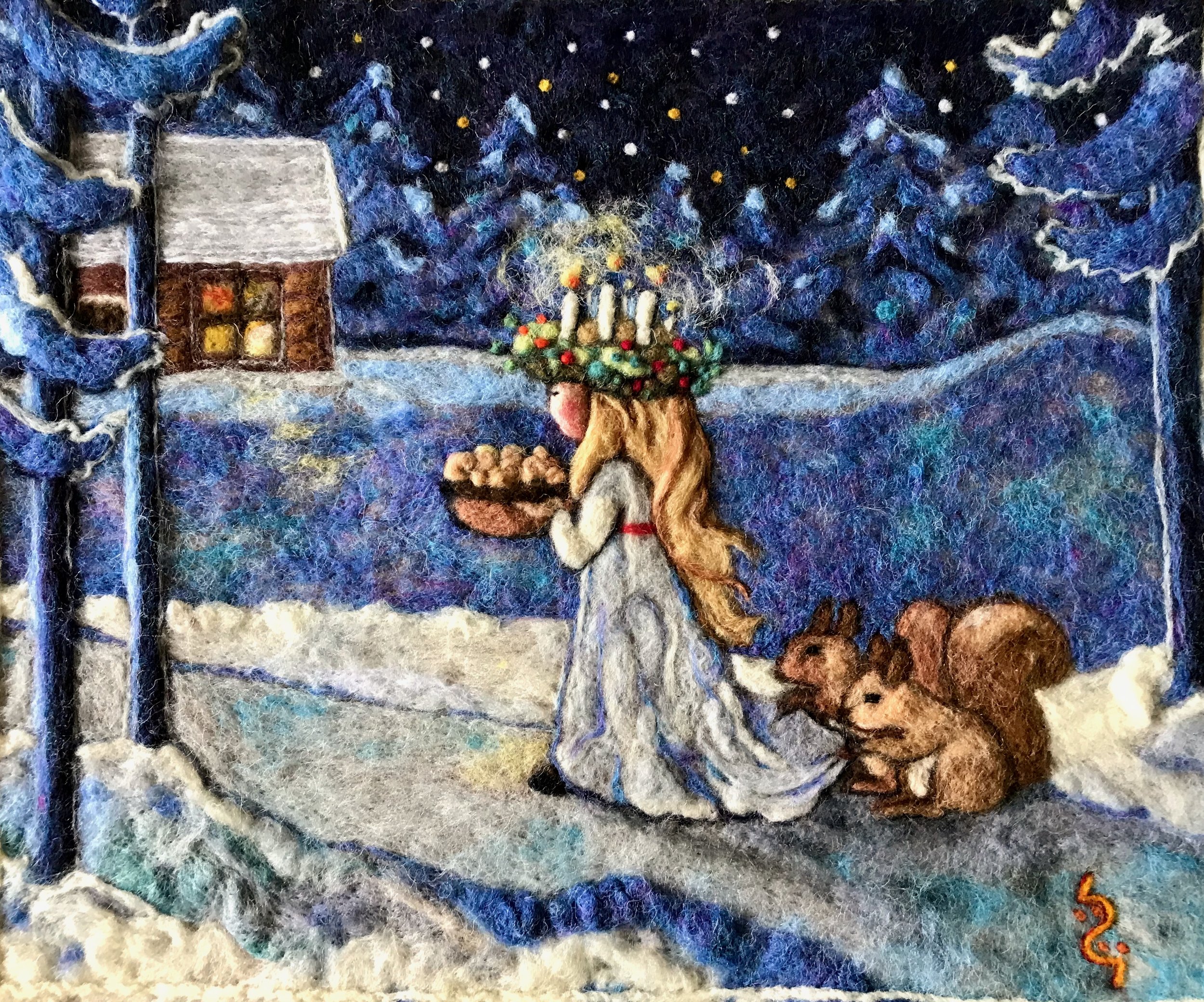

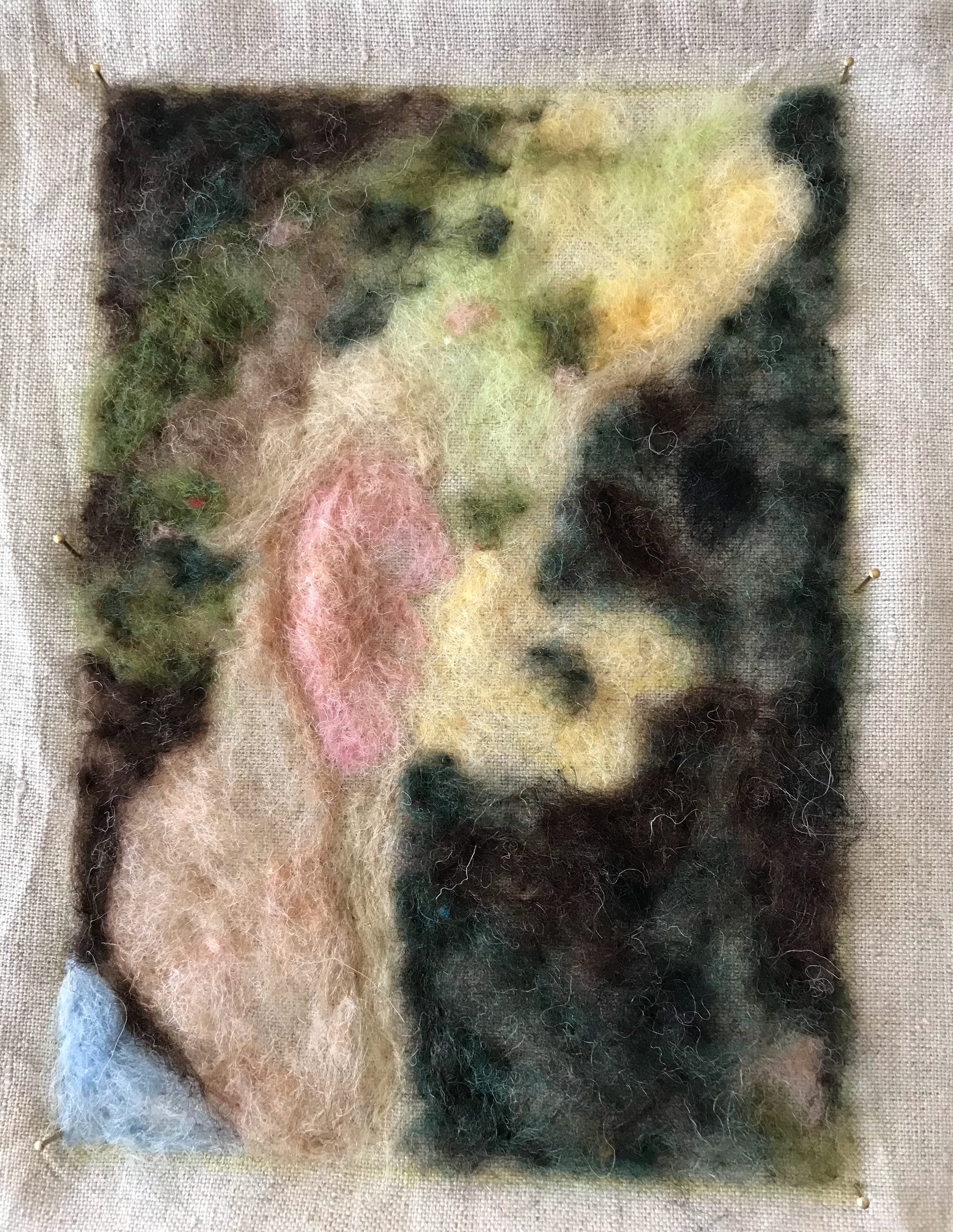
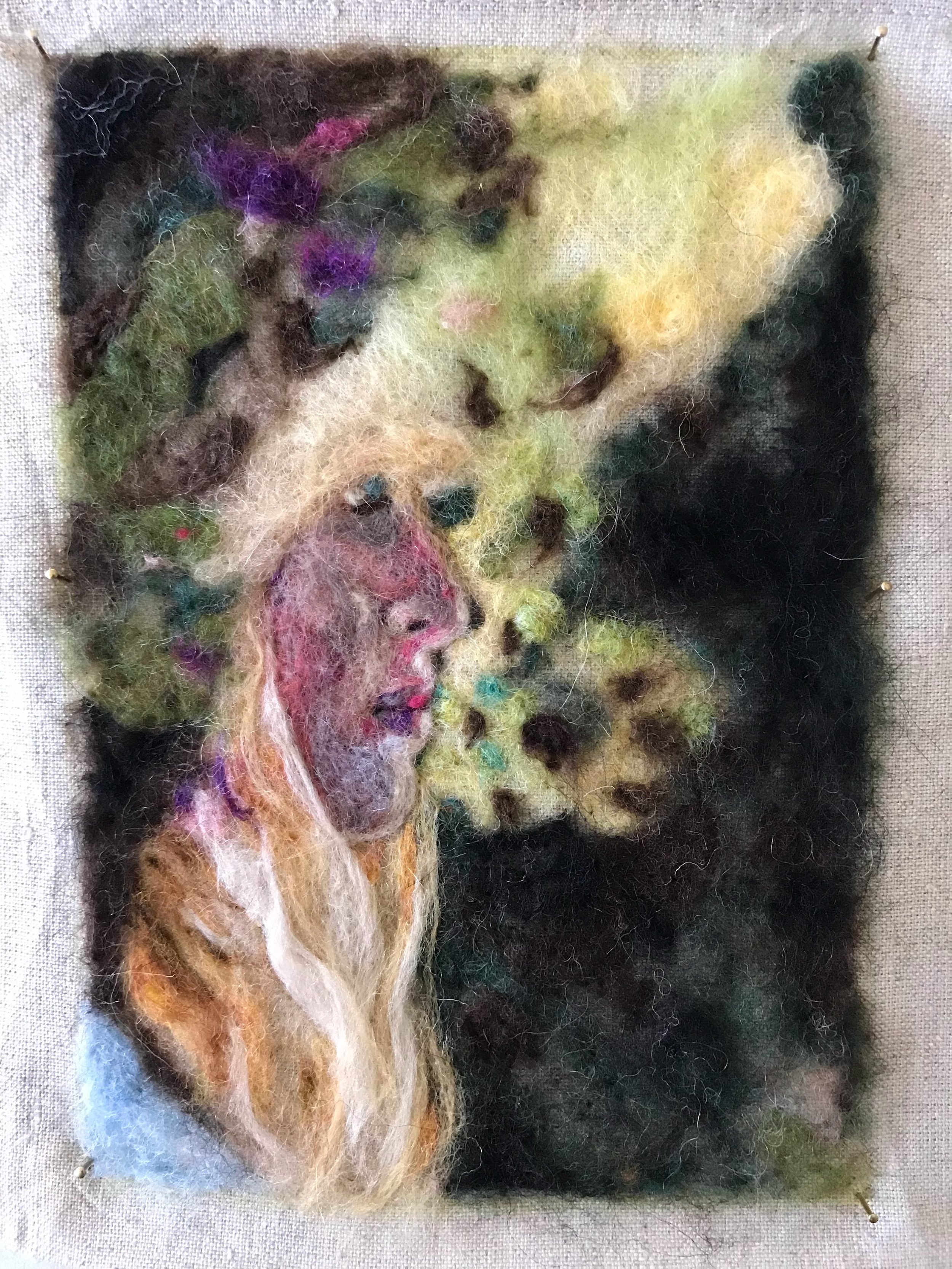
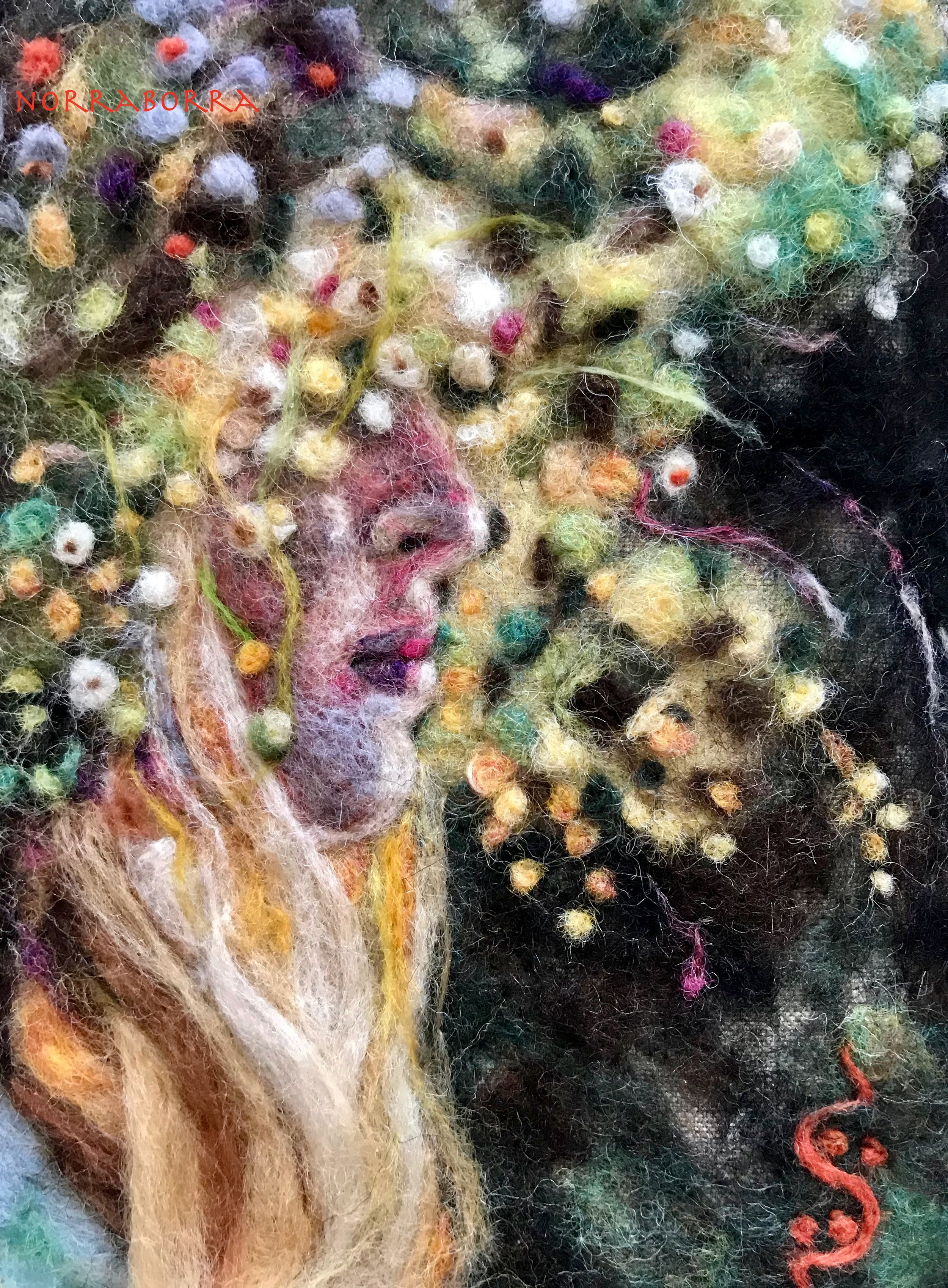
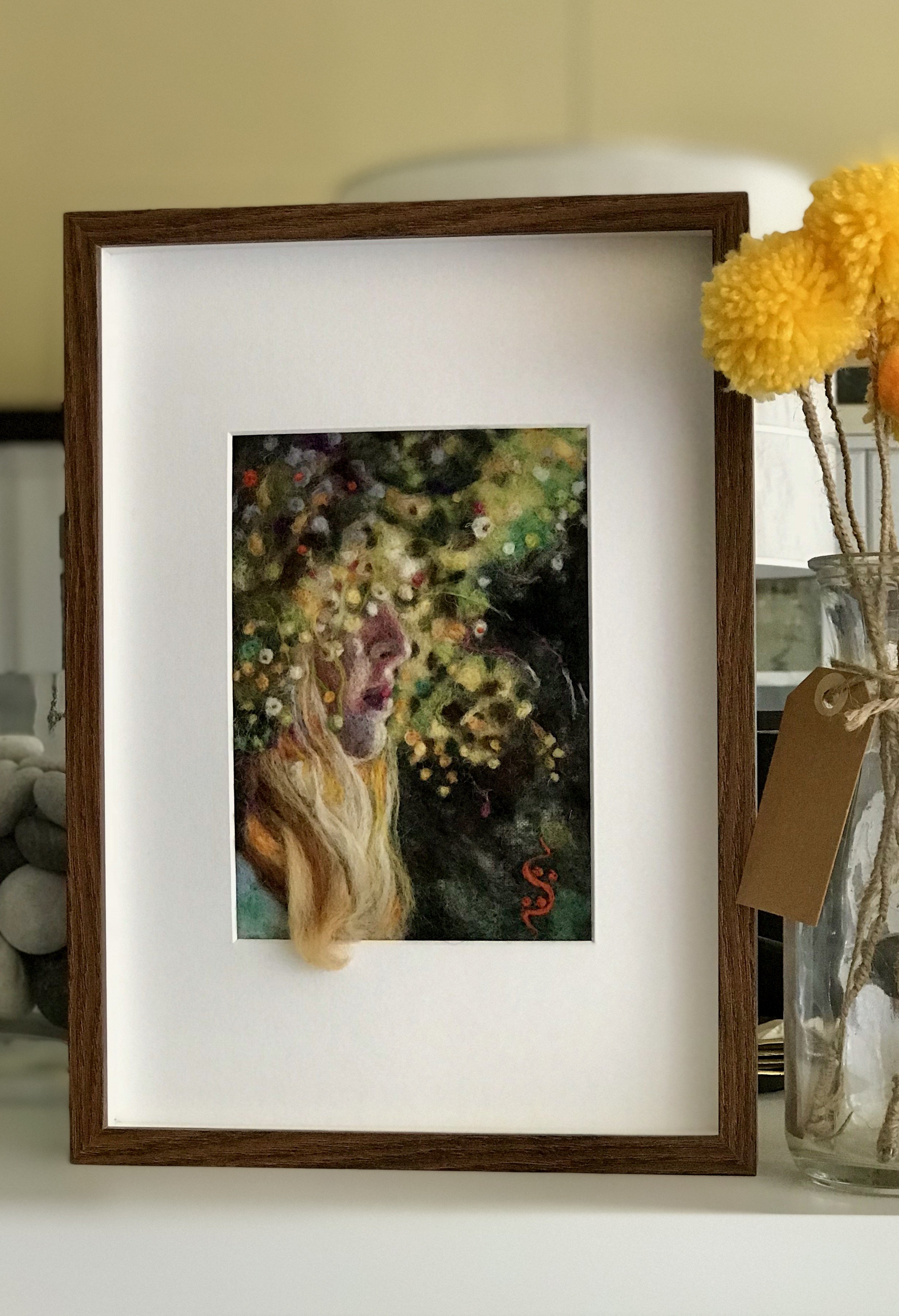
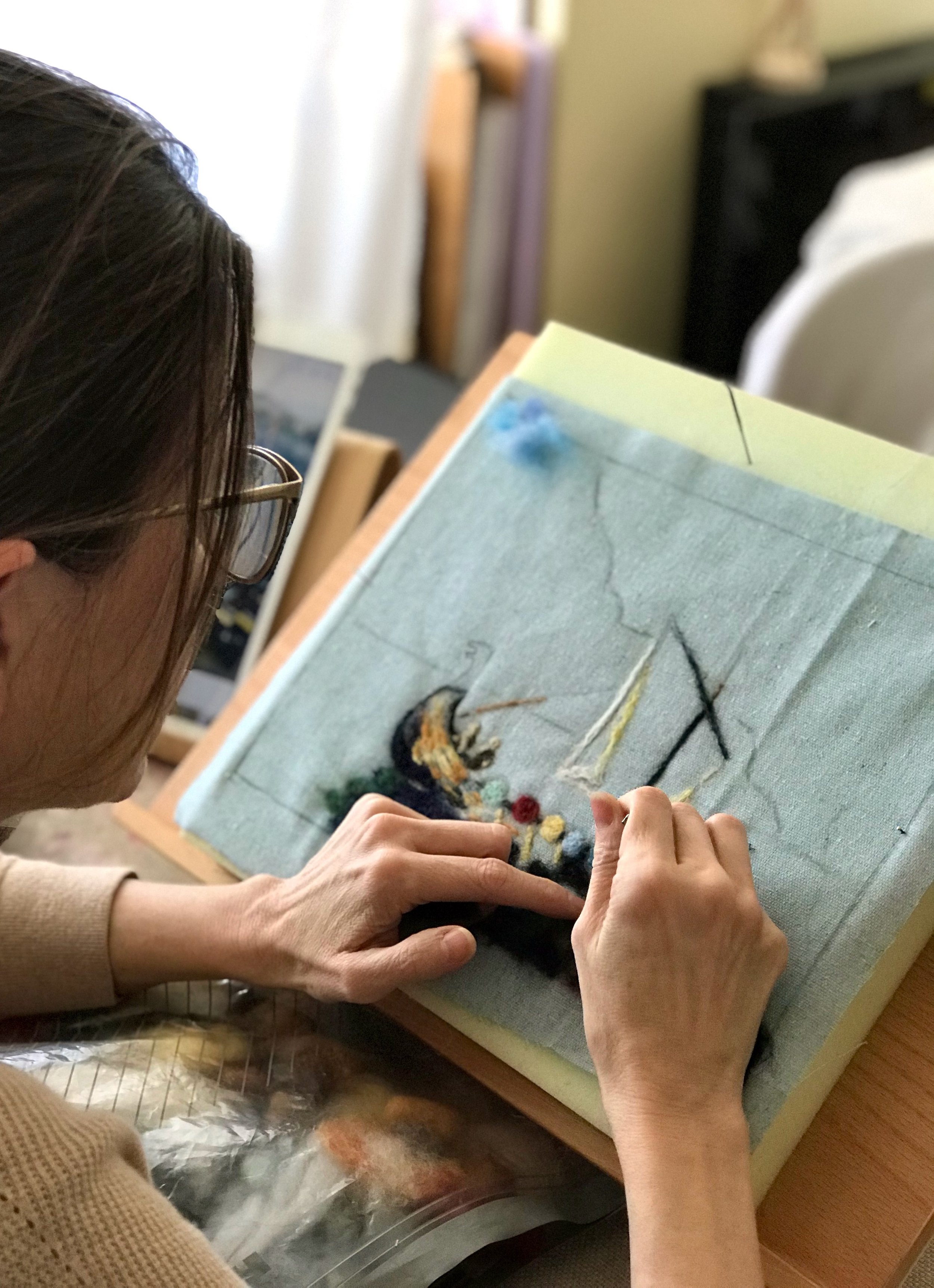
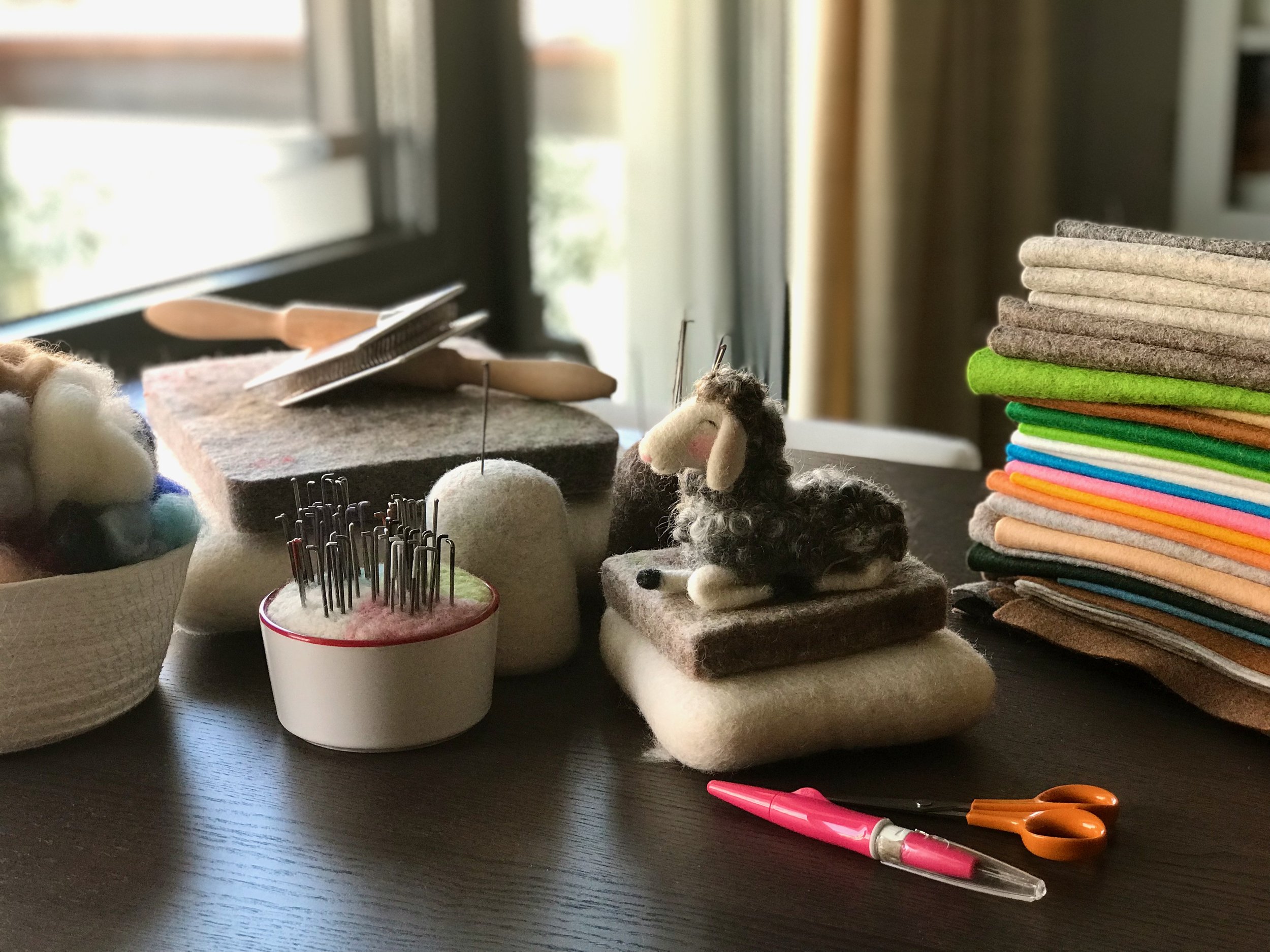
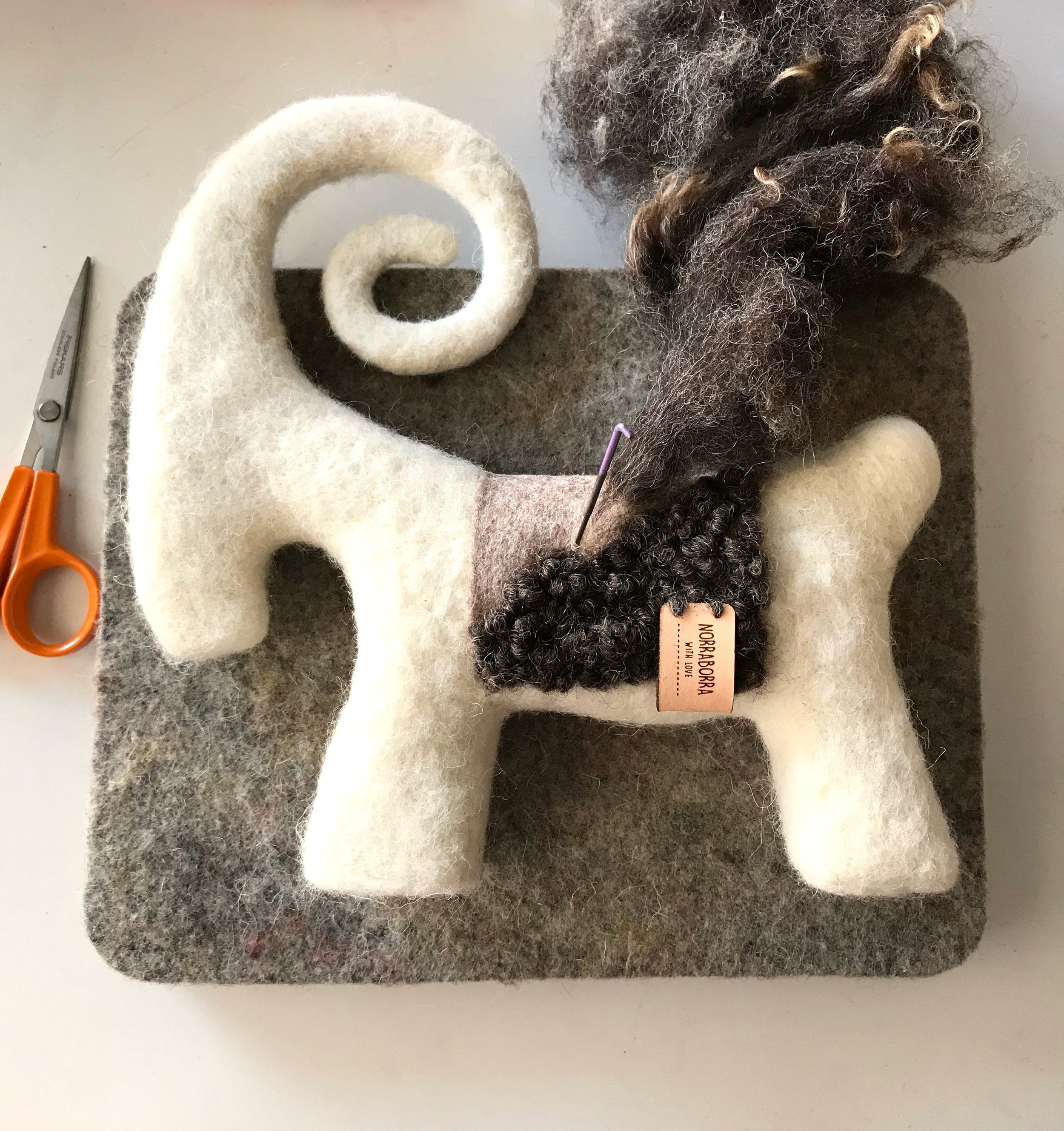


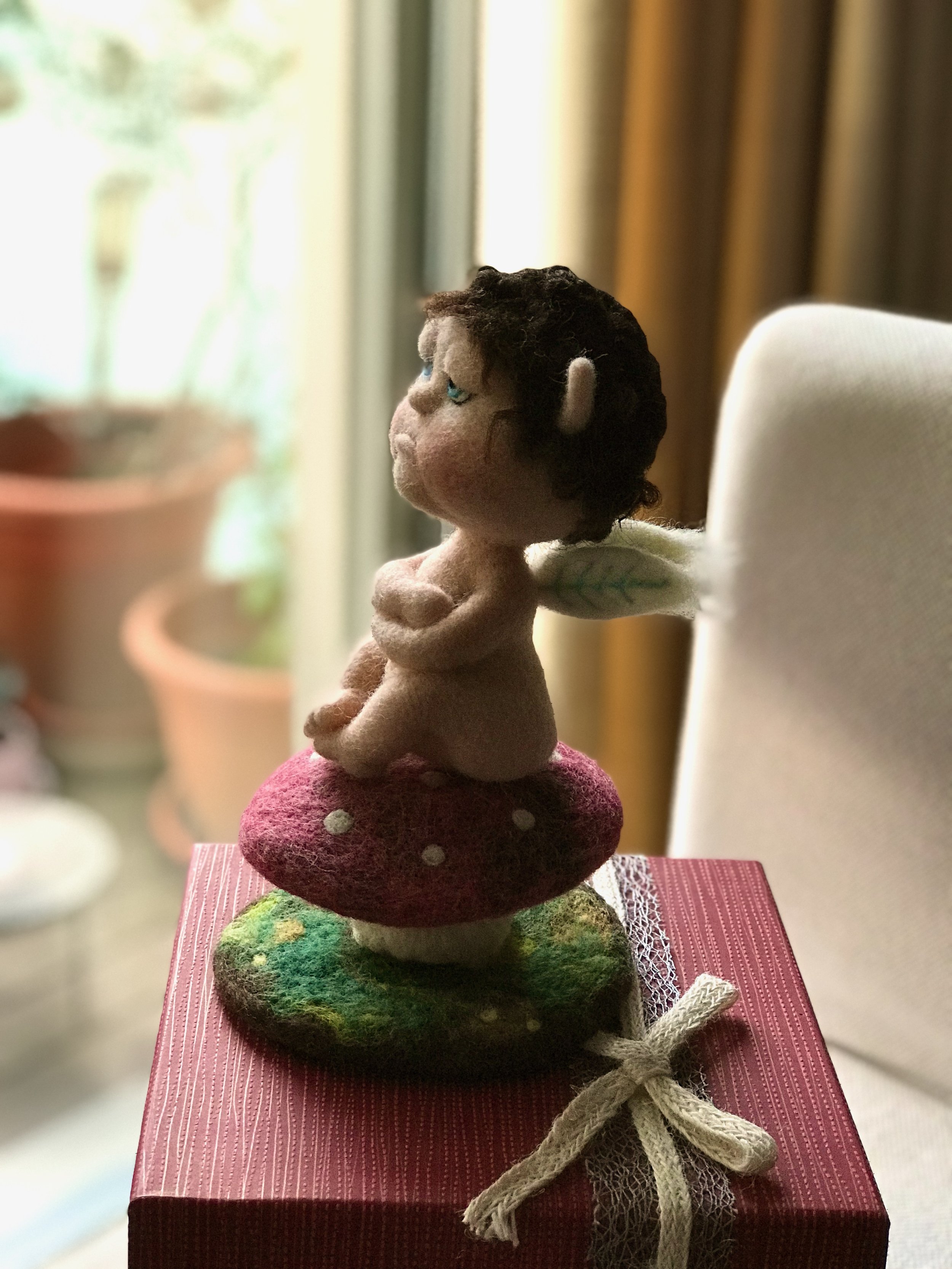



Have you ever seen a picture and fell head over heels in love with it? I have and knew I had to have it grace my wall as well as request an interview with the amazing artist behind the picture. Lourdes of NorraBorra creates stunning and inspiring works of art using felt of all colors and shapes and sizes. She created the picture of the horse running that I saw that day and knew it would inspire me to create my own works of art. She has created Vikings, couples, animals, elves, ships, and so much more! Using layers upon layers of felt, her endless imagination and a needle. Here she graciously shares how she started this paintings of wool, recommendations for new felt artists and women entrepreneurs, and so much more.